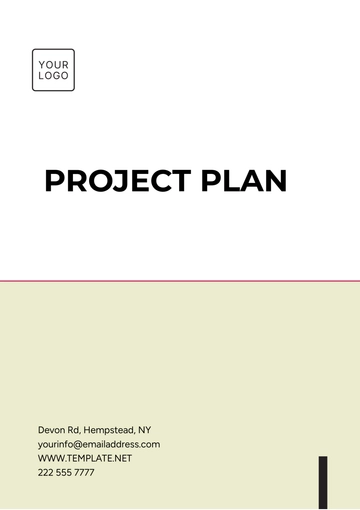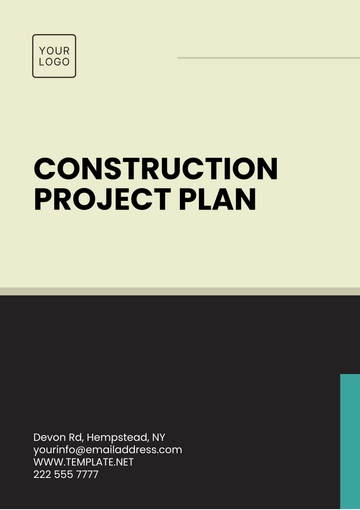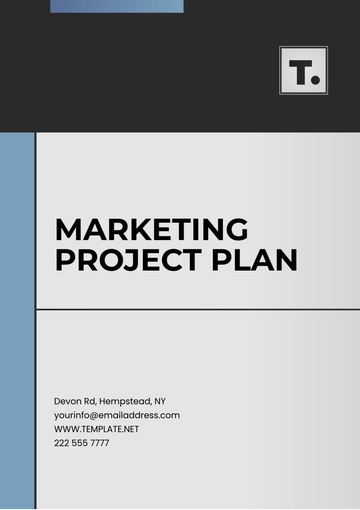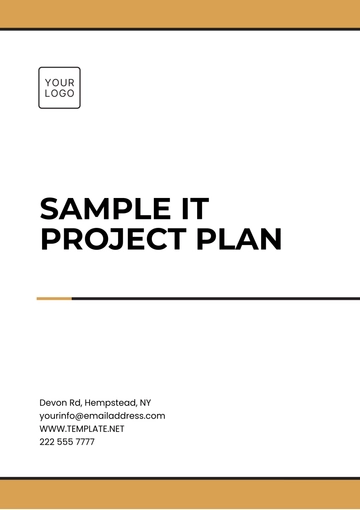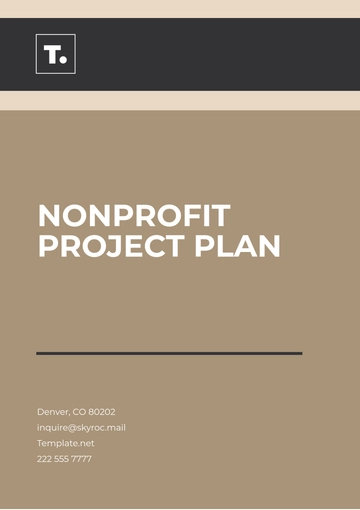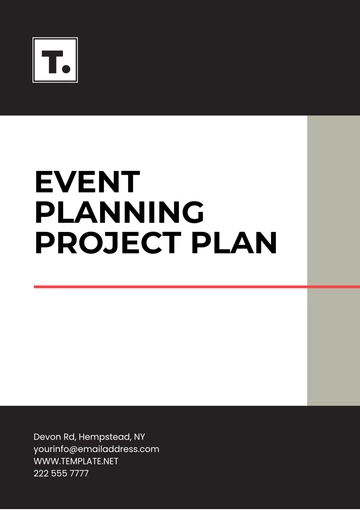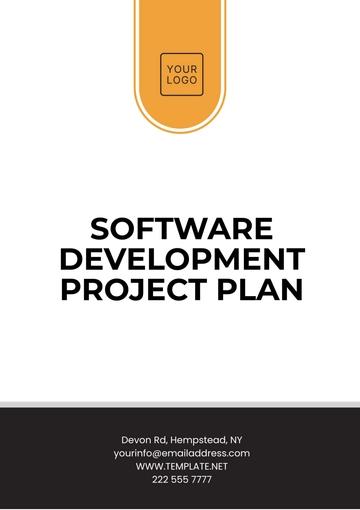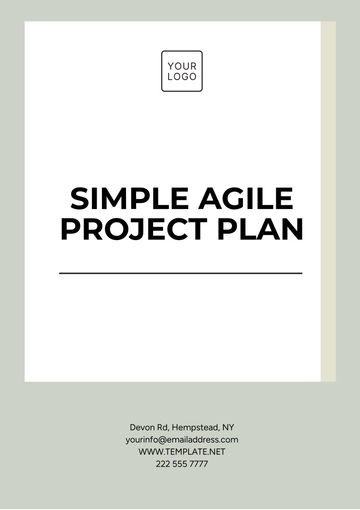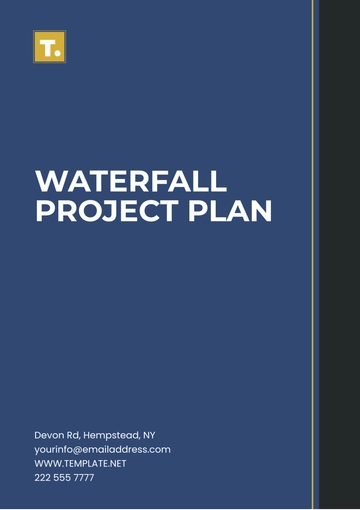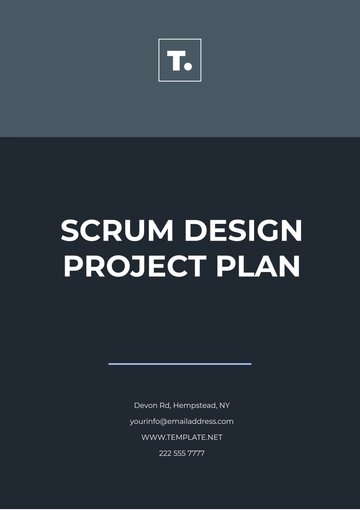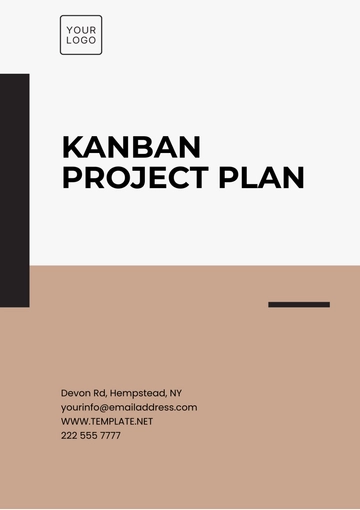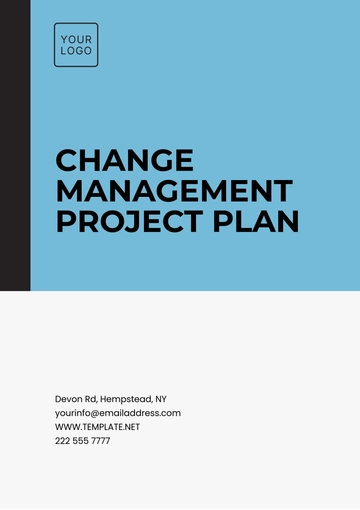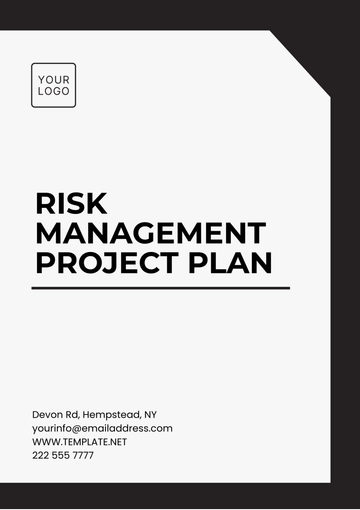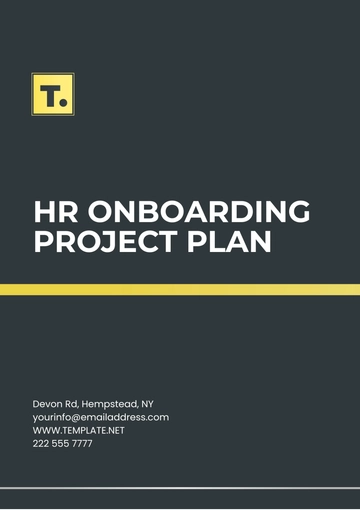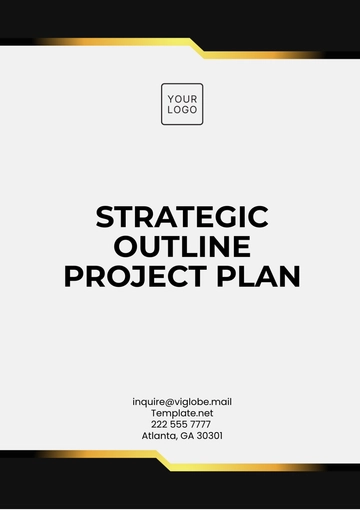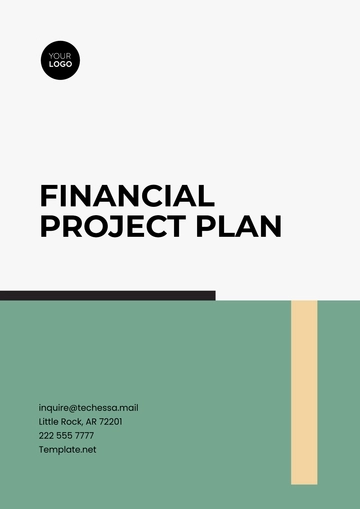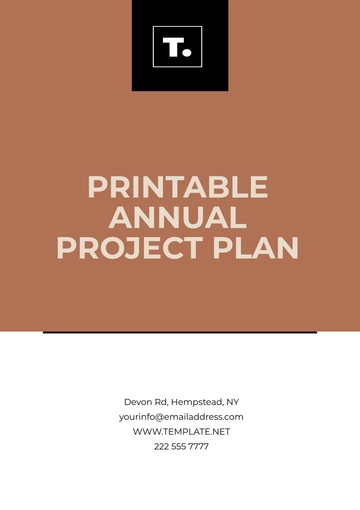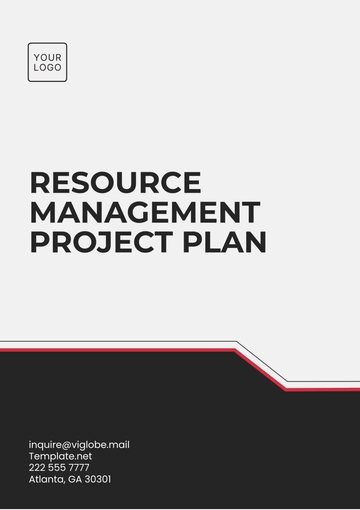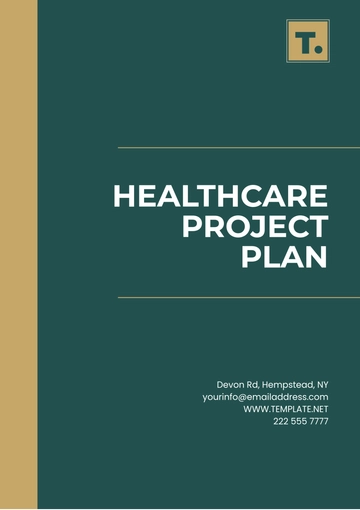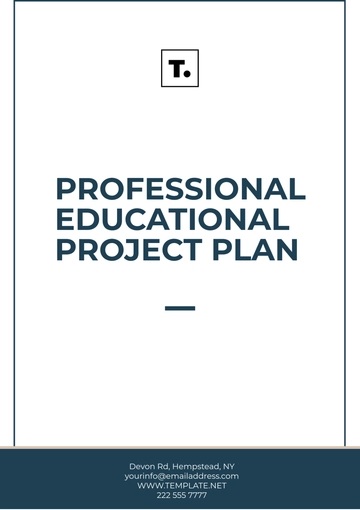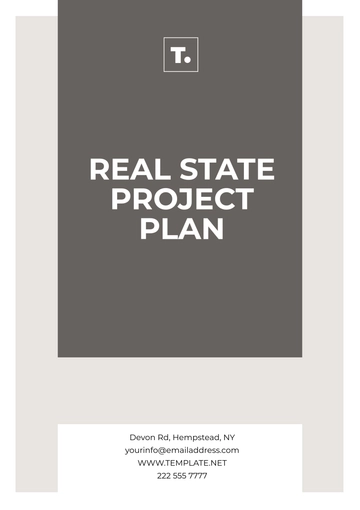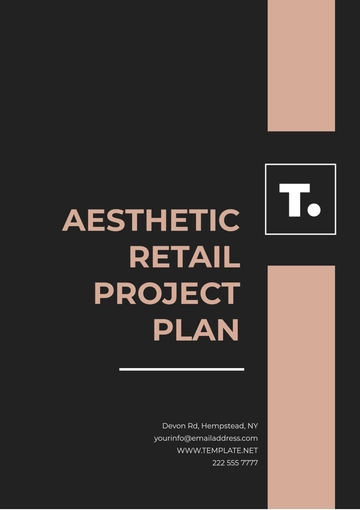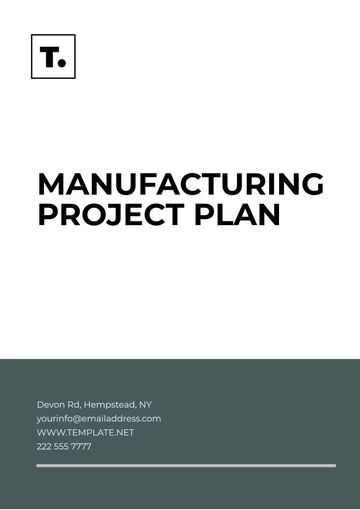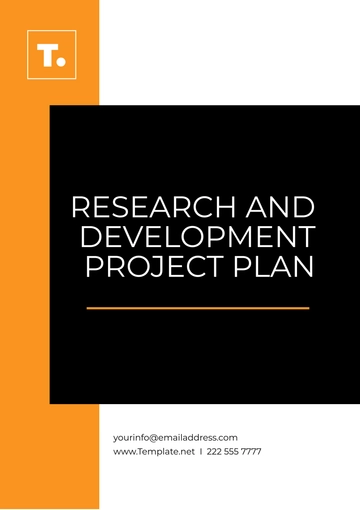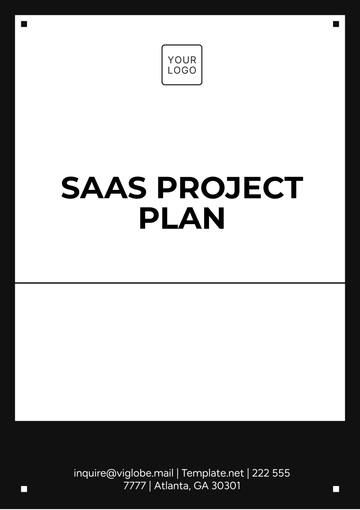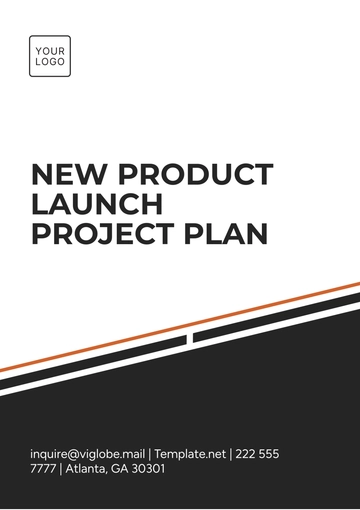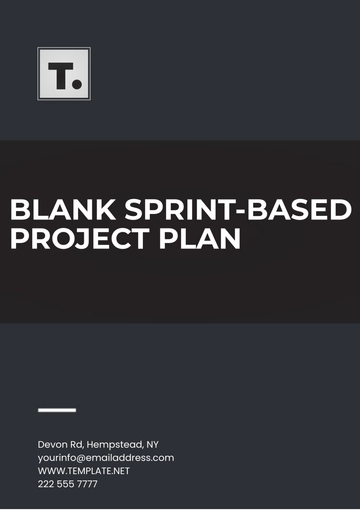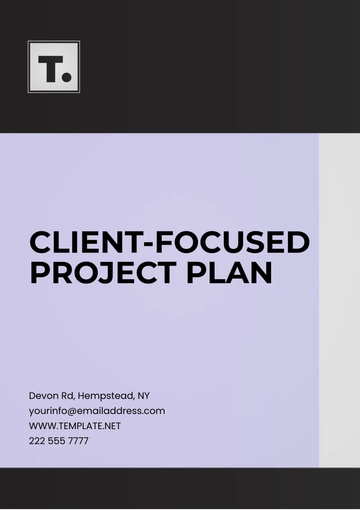Free College Project Plan
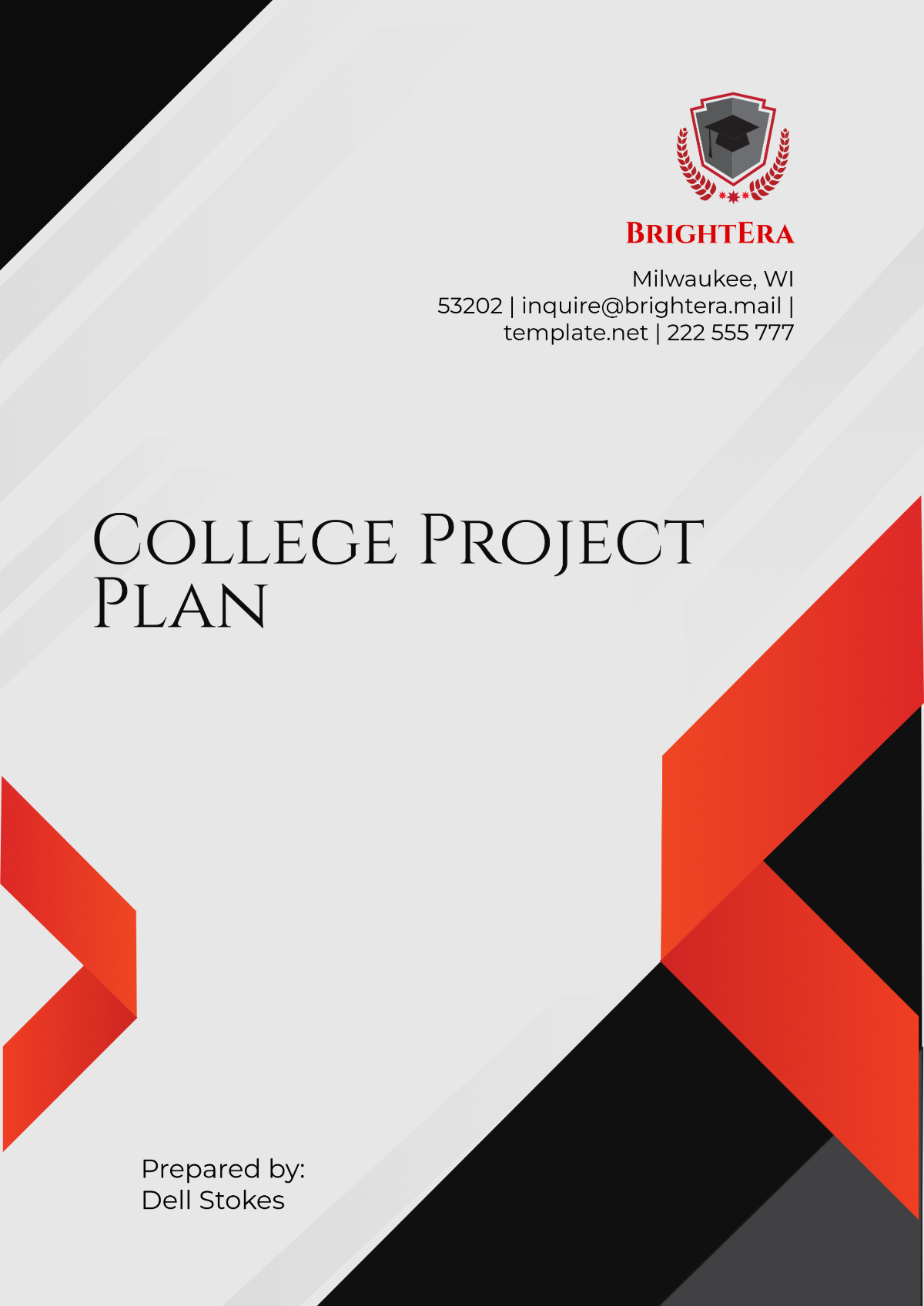
I. Executive Summary
A. Purpose of the Project
The purpose of this college project plan is to create a robust educational framework that integrates modern teaching methodologies, advanced technologies, and practical learning opportunities. By implementing this plan, [Your Company Name] aims to ensure that students are not only well-versed in theoretical knowledge but also equipped with the skills required to solve real-world problems effectively. This initiative is pivotal in maintaining the institution's reputation as a hub of academic excellence and innovation.
This plan emphasizes inclusivity and accessibility, ensuring that students from diverse backgrounds can benefit from enhanced learning experiences. It also seeks to align academic goals with industry requirements, fostering a collaborative ecosystem between education and employment sectors.
B. Objectives
Improve Student Engagement: Enhance classroom dynamics and extracurricular involvement, ensuring active participation from at least [80%] of the student body by [December 2050].
Support Faculty Development: Provide targeted training programs to [100] faculty members annually, focusing on digital tools, pedagogical strategies, and interdisciplinary approaches.
Promote Interdisciplinary Collaboration: Foster a culture of innovation by organizing [20] collaborative projects annually that bring together students and faculty from various disciplines to address societal challenges.
Enhance Employability: Equip [80%] of participating students with skills directly aligning with industry demands within [6] months post-graduation, thereby reducing unemployment rates among graduates.
C. Scope
The scope of this project is comprehensive, encompassing curriculum redesign, technological integration, faculty training, and industry engagement. It includes multiple phases of development, starting from planning and pilot programs to full-scale implementation and evaluation. By covering departments across technology, humanities, arts, and sciences, this project ensures that no discipline is left behind.
The initial phase will involve [5] pilot programs across key departments, while subsequent phases will scale up based on feedback and outcomes. The project timeline is set for three years, with a potential for extension based on success metrics and scalability opportunities.
II. Project Background and Rationale
A. Background
Academic Challenges: Global studies have indicated that traditional teaching methods fail to meet the learning needs of modern students, with engagement rates stagnating at around [65%]. Furthermore, existing curricula often lack the flexibility to adapt to emerging trends, leaving students underprepared for the job market.
Industry Expectations: Recent surveys reveal that [70%] of employers believe new graduates lack essential skills such as critical thinking, problem-solving, and effective communication. This skills gap poses a significant challenge to both educational institutions and industries.
Institutional Goals: In alignment with [Your Company Name]’s vision of nurturing well-rounded individuals, this project seeks to address these gaps by implementing evidence-based strategies and fostering collaboration between academia and industry.
B. Rationale
The increasing demand for experiential and interdisciplinary learning necessitates a paradigm shift in how educational institutions operate. This project addresses these evolving demands by integrating technology, fostering collaboration, and aligning curricula with industry standards.
The project’s success will strengthen the institution’s position as a leader in innovative education by 2055, attracting more students, faculty, and partnerships in the years to come.
By bridging the gap between education and employment, the project aims to contribute to societal development, producing graduates who are not only job-ready but also capable of driving positive change.
III. Project Goals and Objectives
A. Strategic Goals
Elevate Learning Standards: Develop and implement a student-centric curriculum that integrates experiential learning and cutting-edge technologies. This will ensure that students gain hands-on experience and a deeper understanding of their subjects.
Enhance Practical Skills: Introduce real-world projects, internships, and case studies to help students apply their knowledge and build essential skills such as leadership, teamwork, and critical thinking.
Strengthen Community Connections: Build meaningful partnerships with local industries, non-profit organizations, and global enterprises to align educational goals with workforce demands and community needs.
B. Specific Objectives
Objective | Measurement Criteria | Target Date |
|---|---|---|
Increase student retention | Retention rate improved to 85% | December 2051 |
Boost faculty training | Train 50% faculty in digital pedagogy | June 2051 |
Expand partnerships | Sign 10 MOUs with industry partners | December 2052 |
These objectives are designed to be specific, measurable, achievable, relevant, and time-bound (SMART), ensuring clarity and accountability at every stage of the project.
IV. Project Structure and Phases
A. Project Governance
Steering Committee: This committee will include senior faculty members, administrative leaders, and representatives from industry and alumni. The committee will provide strategic direction, ensure alignment with institutional goals, and oversee major decisions.
Project Manager: The project manager will be responsible for day-to-day operations, including coordinating with stakeholders, managing resources, and ensuring that milestones are met.
Working Groups: Specialized working groups will focus on key areas such as curriculum development, technology integration, faculty training, and evaluation. Each group will consist of experts and representatives from relevant departments.
B. Phases of Implementation
Phase 1 – Planning (2050-2051):
Conduct comprehensive needs assessments involving surveys, focus groups, and data analysis to identify gaps and opportunities.
Develop detailed project documentation, including timelines, budgets, and resource plans.
Phase 2 – Pilot Programs (2051):
Implement [5] pilot programs involving [100] students and [20] faculty members across [3] departments. These pilots will test new teaching methodologies, tools, and collaborative projects.
Collect feedback through structured evaluations to identify strengths and areas for improvement.
Phase 3 – Full Implementation (2052):
Scale successful pilot programs to all departments, reaching an estimated [1,000] students annually.
Integrate digital tools such as learning management systems, virtual labs, and AI-powered tutoring platforms.
Phase 4 – Evaluation and Scaling (2052-2053):
Conduct rigorous evaluations to measure the project’s impact on student outcomes, faculty performance, and industry satisfaction.
Refine strategies based on evaluation results and expand successful models to other institutions within [Your Partner Company Name].
V. Budget and Resource Allocation
A. Budget Overview
Category | Estimated Cost ($) | Allocation Details |
|---|---|---|
Faculty Training | 500,000 | Workshops, certifications, and materials |
Student Support | 300,000 | Scholarships, devices, and learning aids |
Technology Integration | 700,000 | Software licenses, hardware, and IT services |
Marketing and Outreach | 200,000 | Campaigns, brochures, and online ads |
Evaluation and Scaling | 100,000 | Surveys, analytics tools, and consultants |
B. Funding Sources
Institutional funding: [50%] of the total budget, sourced from operational budgets and reserves.
Industry partnerships: [30%] through sponsorships, donations, and collaborative projects.
Grants and sponsorships: [20%], secured through government funding programs and private foundations.
VI. Project Deliverables
A. Tangible Deliverables
New Interdisciplinary Courses: Development of at least [10] innovative courses integrating knowledge and methodologies from multiple disciplines. These courses will be designed to tackle contemporary global issues, such as climate change, artificial intelligence, and social equity.
Innovation Labs: Establishment of [3] state-of-the-art innovation labs equipped with advanced tools like 3D printers, robotics kits, and data analysis software. These labs will serve as hubs for creativity and experimentation, accessible to all students and faculty.
Comprehensive Annual Report: Publication of a detailed project report highlighting achievements, challenges, and future plans. This report will be distributed to stakeholders and used as a reference for similar initiatives.
B. Intangible Deliverables
Enhanced Student Morale: Regular surveys and feedback sessions will measure improvements in student satisfaction, aiming to achieve a morale rating of [90%] or higher.
Strengthened Industry-Academia Collaboration: Partnerships with at least [10] key industry players will be formalized through memorandums of understanding (MOUs), ensuring continuous support and collaboration.
Increased Institutional Reputation: As the project gains visibility and yields measurable outcomes, [Your Company Name] is projected to rank among the top [50] innovative colleges worldwide by the year 2055.
VII. Risks and Mitigation Strategies
A. Potential Risks
Every project of this scale is bound to encounter challenges. Therefore, understanding and addressing risks proactively is crucial to the success of the project. Identifying potential risks early will help in developing strategies to mitigate them. Below are the primary risks that could impact the project:
Risk | Impact Level | Mitigation Strategy |
|---|---|---|
Resistance to Change | High | Resistance to changes in teaching methods, technology integration, and curriculum reforms can be significant, especially among staff and students who are accustomed to traditional approaches. To address this, we will conduct awareness campaigns to communicate the benefits of the project, host training sessions to ease transitions, and offer incentives for early adopters. Additionally, creating a support system for individuals to voice concerns and get assistance will be vital. |
Budget Overruns | Medium | Managing finances is a crucial aspect of project success. Budget overruns may occur due to unforeseen expenses, such as technology upgrades, faculty training costs, or expanded student support services. To prevent this, we will implement strict financial oversight, conduct regular financial reviews, and allocate [15%] of the budget as contingency funds to address any unexpected costs. |
Technology Adoption Delays | Medium | Implementing new technologies may face delays, especially if there are compatibility issues with existing systems or a lack of training. We will partner with reliable IT vendors, conduct pilot tests, ensure regular maintenance and support, and provide ongoing technical training for faculty and students. Furthermore, all digital tools and platforms will be thoroughly tested before full-scale deployment. |
Limited Faculty Participation | High | If faculty members are not fully engaged in the professional development initiatives or in adopting new teaching methodologies, the project’s effectiveness will be limited. To mitigate this risk, we will establish clear incentives, such as professional development credits, performance-based rewards, and recognition programs. Additionally, we will work closely with department heads to identify and address any concerns or obstacles preventing full participation. |
Student Retention Issues | High | Although the goal is to increase student engagement, there is a risk that some students may find the new methodologies challenging or unappealing. To minimize the risk of student disengagement or withdrawal, we will implement continuous student support systems, such as mentoring, counseling, and workshops. Early intervention strategies will ensure that students who are struggling receive the help they need before it affects their academic success. |
B. Risk Assessment Process
A comprehensive risk management framework will be used throughout the project. Regular risk assessments will be carried out by the Risk Management Team, with input from all stakeholders, including faculty, students, and external partners. Monthly risk assessment reports will be created to identify new potential risks and develop timely mitigation strategies.
Additionally, periodic scenario-based workshops will be held with stakeholders to foresee potential challenges that may arise as the project progresses, and necessary adjustments will be made in response to feedback and changing circumstances.
VIII. Monitoring and Evaluation
A. Monitoring Mechanisms
Continuous monitoring is essential to ensure the success of the project. A structured process for tracking progress and making adjustments is necessary to keep the project on track. Below are the primary mechanisms for monitoring:
Progress Reports: Every working group within the project will be responsible for submitting bi-weekly progress reports. These reports will track the completion of tasks, assess timelines, and identify any obstacles faced by the team. These reports will be reviewed by the project manager, the steering committee, and relevant stakeholders to ensure the project is advancing as planned.
Project Management Software: Tools such as Asana or Trello will be utilized to track and visualize the progress of tasks and sub-tasks. These platforms allow for seamless collaboration, real-time updates, and easy tracking of project milestones. Each stakeholder will have access to these tools, ensuring transparency and accountability in the project’s execution.
Stakeholder Meetings: Quarterly meetings with key stakeholders, including faculty, students, industry partners, and community members, will be held to review project progress. These meetings will be an opportunity for open discussion, where feedback will be collected, and any emerging issues can be addressed. These forums will also serve as an opportunity to celebrate milestones and keep everyone engaged.
B. Key Performance Indicators (KPIs)
To measure the effectiveness of the project, the following Key Performance Indicators (KPIs) will be tracked. These KPIs will serve as benchmarks for the project's success:
Indicator | Baseline (%) | Target (%) |
|---|---|---|
Student engagement improvement | 65 | 85 |
Faculty participation in training | 20 | 50 |
Graduate employability rate | 70 | 90 |
Industry partnership growth | 5 | 15 |
These KPIs will be reviewed at regular intervals (quarterly or semi-annually) to assess whether the project is meeting its goals. Any areas falling short will be addressed through corrective actions and strategy adjustments.
C. Evaluation Tools
Evaluation tools will provide the insights needed to adjust and improve the project in real-time. These tools will include:
Surveys and Feedback Forms: Surveys will be administered to students, faculty, and industry partners at regular intervals (e.g., end of each semester). These surveys will gather feedback on the effectiveness of teaching methodologies, course content, technology integration, and overall satisfaction with the project.
Analytical Dashboards: Data visualization tools will be used to monitor and assess project outcomes, such as student performance metrics, faculty participation rates, and industry collaboration. These dashboards will make it easier to identify trends, track KPIs, and visualize the project’s overall progress.
Third-Party Audits: Independent third-party evaluators will be hired to conduct external audits of the project’s implementation. These audits will verify the accuracy of internal assessments, offer unbiased evaluations, and provide recommendations for improvements.
IX. Communication Plan
A. Internal Communication
Clear, transparent, and consistent communication is vital for keeping all stakeholders informed and engaged in the project’s progress. The following methods will be used for internal communication:
Monthly Newsletters: A monthly newsletter will be sent to all stakeholders, including faculty, students, and staff, to update them on the latest developments, upcoming events, and key achievements. The newsletter will include important announcements, project progress, and student and faculty success stories.
Project Portal: A dedicated online portal will serve as the central hub for all project-related information. This platform will host project documentation, meeting minutes, reports, and discussion threads, ensuring all stakeholders have easy access to relevant information. The portal will be updated regularly to reflect the most current status of the project.
Workshops and Seminars: Interactive workshops and seminars will be conducted to engage participants and inform them about project objectives, methodologies, and upcoming milestones. These sessions will provide an opportunity for faculty and students to voice concerns, suggest improvements, and contribute ideas.
B. External Communication
The project’s impact and progress will also be communicated to external stakeholders, including the public, potential partners, and alumni, using the following methods:
Press Releases: Key achievements and milestones will be shared through press releases issued every six months. These will be distributed to media outlets and will highlight significant events such as the launch of new courses, technology integration, and industry partnerships. The press releases will also focus on the impact of the project on student outcomes and employability.
Social Media Campaigns: Regular updates on the project will be posted across [Your Company Social Media] platforms, showcasing success stories, new initiatives, and partnership announcements. Social media will be used to engage a wider audience, including prospective students, industry partners, and the general public.
Partnership Events: Collaborative events with industry partners will be organized to promote the project and demonstrate its practical applications. These events will be an opportunity to share insights, explore new opportunities for collaboration, and celebrate the project’s success.
X. Conclusion and Next Steps
The College Project Plan aims to position [Your Company Name] as a leader in innovative education by implementing a forward-thinking approach to learning, technology, and industry collaboration. By addressing existing gaps and promoting student engagement, faculty development, and real-world experience, the project will produce well-rounded graduates who are equipped to succeed in a rapidly evolving job market.
Next Steps
Finalize Project Documentation: Ensure that all project documentation, including the detailed budget, timelines, and resource allocations, are finalized and submitted to the relevant institutional bodies for approval.
Launch Awareness Campaigns: Conduct outreach to inform all stakeholders about the project’s goals, opportunities, and expected outcomes. This will include informational sessions for faculty and staff and promotional materials for students.
Begin Phase 1 of Implementation: Start Phase 1 in January 2050 with a focus on planning, needs assessments, and curriculum development. Phase 1 will also involve setting up the infrastructure required for technology integration.
Conduct Initial Review: After [6] months, the project’s progress will be reviewed, and adjustments will be made based on feedback, challenges faced, and evolving needs.
- 100% Customizable, free editor
- Access 1 Million+ Templates, photo’s & graphics
- Download or share as a template
- Click and replace photos, graphics, text, backgrounds
- Resize, crop, AI write & more
- Access advanced editor
Create detailed project plans for college initiatives with the College Project Plan Template from Template.net. This editable and customizable template is designed to help you organize and track progress on academic projects. Modify it with the AI Editor Tool to suit your specific needs. Download today to streamline your college project planning.
